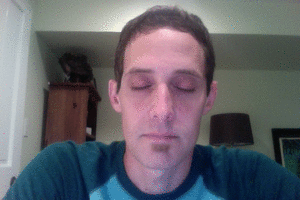I woke up this morning wondering, "how important is it that students have a course called 'American Literature'?" Ok, so I didn't wake up thinking that, but actually arrived at the question after reading a piece discussing the skills students will need to be successful in the 21st Century. The list was predictable: collaboration, creativity, adaptability, curiosity, communication. Predictable is not meant as an insult. It doesn't mean this list is incorrect; if anything, predictable denotes how critical these skills are. Predictable signifies that there is a consensus surrounding the importance of these skills. I've read blog posts, reports, articles, interviews with education leaders, books, and tweets that equate one or more of these skills to becoming productive and successful 21st Century existence.
So back to my original question. Is "American Literature" necessary?
Of course, as an English teacher, and literature fan in general, I am not asking if literature is important or necessary. Reading fiction, and simply being a reader, is also a critical activity. But is there a compelling argument for insuring that students have read canonical American Literature? If students do not experience Fitzgerald, Twain, Melville, or other classic American authors, will they be deficient citizens, unable to fully grasp the American Experiment?
America is a place founded on ideas about equality, opportunity, and freedom. Undoubtedly, it is crucial for young people to struggle with these ideas, especially as the ideas move from the plastic-wrapped sanctity of our founding documents to the messy, conflict-laden reality of day-to-day life. Naturally, one way to get young people to do this is by having them read and consider Huck's dilemma as he navigates the Mississippi or Tom Joad's relentless stand against a venal, inequitable system.
But is it necessary that students know these names to understand what democratic citizenship requires? If young people have less familiarity with these names, does it jeopardize our cultural heritage and generational cohesion, making it less possible for the American Experiment to flourish?
While colleagues will disagree with me, as an American Lit teacher, my answer to these last two questions is 'no.'
While I grant that cultural literacy has been and will continue to erode, I am not particularly upset about it. Sure, I'm surprised, even saddened sometimes, by the growing list of dead references I encounter in the classroom. However, this seems inevitable as our access to information grows and our media experiences become more diffuse. All the same, this does not mean that we lose sight of our deeply held principles. It is imperative that students confront the tensions inherent in the American Experiment, even if these confrontations do not grow out of reading The Scarlet Letter.
As I said earlier, I will continue to stress how important it is for them to be readers. I will continue to make a case for how fiction works as a testing ground where we encounter great minds asking difficult questions. I will continue to help them become confident, thoughtful, tolerant thinkers and communicators. And I will continue to look for ways to help them ignite their curiosity and find the questions and ideas that make them passionate. I will continue to do these things because I believe this is how the American Experiment remains vibrant.
My point is not to forgo all classic works simply because they are classics. Instead, what I am trying to figure out is if a regimen of canonical American works somehow creates a more motivated, conversant American citizen. This seems unlikely. Instead, more and more, I'm confident that it's important to teach "American Principles" or "American Ideas", where the curriculum is flexible enough to include any media texts that are compelling and can enrich my students as human beings and as participants in all that America has to offer.
What I am less sure about is how critical it is for students to know that James Gatsby was born Jay Gatz. If not, they can still understand what it means to be an American.




 Now it's on to the classroom in the fall. How much can I provide a physical and digital space that allows my students to have the same experiences? Not sure. However, this is more than just an "in addition to." If my goal for everything we do in the classroom is to "make it matter," then these 5 experiences are imperative. Not only will they help to foster an academic digital routine, which they desperately need, but it will also bring a healthy dose of Terry Elliot's "messification" to the classroom. Not to mention positioning students and me on the edge of the "emergent possible."
Now it's on to the classroom in the fall. How much can I provide a physical and digital space that allows my students to have the same experiences? Not sure. However, this is more than just an "in addition to." If my goal for everything we do in the classroom is to "make it matter," then these 5 experiences are imperative. Not only will they help to foster an academic digital routine, which they desperately need, but it will also bring a healthy dose of Terry Elliot's "messification" to the classroom. Not to mention positioning students and me on the edge of the "emergent possible."








